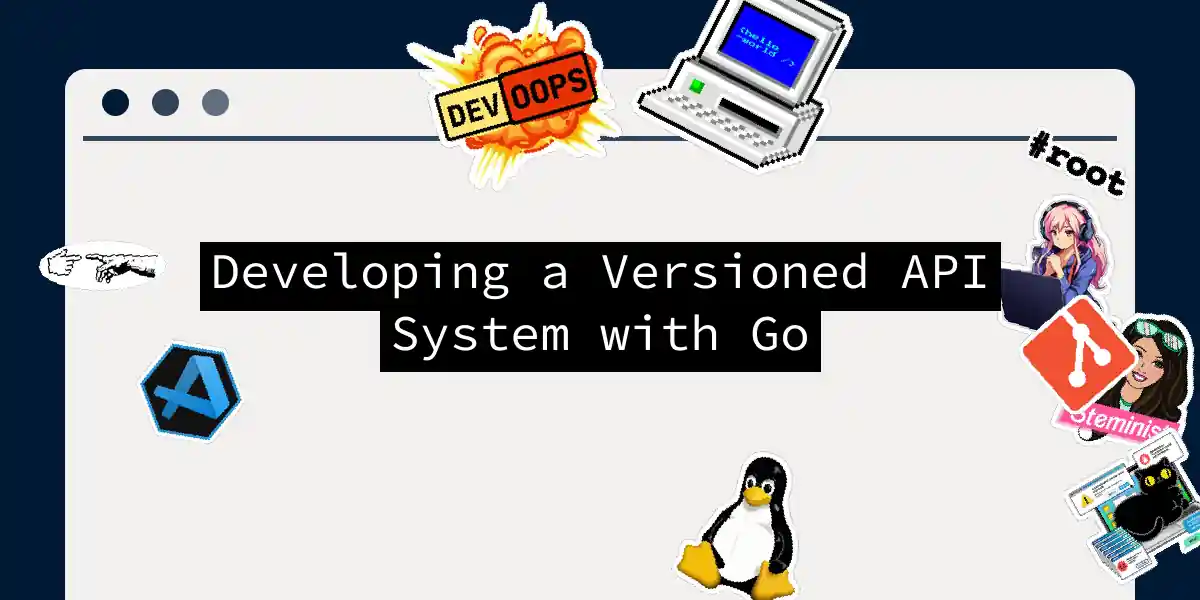Introduction to API Versioning
When building RESTful APIs, one of the most critical aspects to consider is versioning. API versioning allows you to manage changes to your API without breaking existing integrations, making it a cornerstone of robust and maintainable API design. In this article, we will delve into the world of API versioning using Go, a language known for its simplicity, efficiency, and high performance.
Why Go?
Go, or Golang, is an excellent choice for building high-performance and scalable REST APIs. Here are a few reasons why:
- Performance: Go is a compiled language, offering performance benefits comparable to C++ but with the simplicity of a modern language.
- Concurrency: Go’s built-in support for concurrency through goroutines and channels makes it ideal for handling multiple requests simultaneously.
- Standard Library: Go’s extensive standard library includes functions for handling HTTP requests, JSON encoding and decoding, and database interactions, reducing the need for external dependencies.
Setting Up the Environment
Before diving into the implementation, let’s set up our Go environment.
mkdir my-go-project
cd my-go-project
go mod init my-go-project
This will create a go.mod file to manage your project’s dependencies.
Basic REST API Structure
Let’s create a basic structure for our project:
my-go-project/
├── main.go
├── handlers.go
├── models.go
└── utils.go
Main File
Here’s a basic main.go file to get us started:
package main
import (
"fmt"
"net/http"
)
func main() {
http.HandleFunc("/api/v1/items", getItems)
http.HandleFunc("/api/v1/items/create", createItem)
// Add routes for update and delete items
fmt.Println("Server is running on port 8080")
http.ListenAndServe(":8080", nil)
}
Handlers
In handlers.go, we define our API handlers:
package main
import (
"encoding/json"
"net/http"
"my-go-project/utils"
)
func getItems(w http.ResponseWriter, r *http.Request) {
// Implementation to get items
items := []string{"Item1", "Item2"}
utils.Respond(w, map[string]interface{}{"items": items})
}
func createItem(w http.ResponseWriter, r *http.Request) {
// Implementation to create an item
var item map[string]string
err := json.NewDecoder(r.Body).Decode(&item)
if err != nil {
http.Error(w, err.Error(), http.StatusBadRequest)
return
}
// Save the item to the database or any other storage
utils.Respond(w, map[string]interface{}{"message": "Item created successfully"})
}
func updateItem(w http.ResponseWriter, r *http.Request) {
// Implementation to update an item
}
func deleteItem(w http.ResponseWriter, r *http.Request) {
// Implementation to delete an item
}
Utilities
In utils.go, we define some utility functions:
package utils
import (
"encoding/json"
"net/http"
)
func Respond(w http.ResponseWriter, data map[string]interface{}) {
w.Header().Add("Content-Type", "application/json")
json.NewEncoder(w).Encode(data)
}
func Message(status bool, message string) map[string]interface{} {
return map[string]interface{}{"status": status, "message": message}
}
API Versioning Strategies
There are several strategies for versioning APIs:
URI Path Versioning
This involves including the version number in the URI path.
http.HandleFunc("/api/v1/items", getItems)
http.HandleFunc("/api/v2/items", getItemsV2)
Query Parameter Versioning
This involves passing the version as a query parameter.
http.HandleFunc("/api/items", func(w http.ResponseWriter, r *http.Request) {
version := r.URL.Query().Get("version")
if version == "v1" {
getItems(w, r)
} else if version == "v2" {
getItemsV2(w, r)
} else {
http.Error(w, "Unsupported version", http.StatusBadRequest)
}
})
Header Versioning
This involves passing the version in a custom HTTP header.
http.HandleFunc("/api/items", func(w http.ResponseWriter, r *http.Request) {
version := r.Header.Get("Accept-Version")
if version == "v1" {
getItems(w, r)
} else if version == "v2" {
getItemsV2(w, r)
} else {
http.Error(w, "Unsupported version", http.StatusBadRequest)
}
})
Media Type Versioning
This involves using custom media types to specify the version.
http.HandleFunc("/api/items", func(w http.ResponseWriter, r *http.Request) {
version := r.Header.Get("Content-Type")
if version == "application/vnd.myapi.v1+json" {
getItems(w, r)
} else if version == "application/vnd.myapi.v2+json" {
getItemsV2(w, r)
} else {
http.Error(w, "Unsupported version", http.StatusBadRequest)
}
})
Implementing Versioning
Let’s implement URI path versioning, which is one of the most common and straightforward methods.
Updated Main File
package main
import (
"fmt"
"net/http"
)
func main() {
http.HandleFunc("/api/v1/items", getItemsV1)
http.HandleFunc("/api/v1/items/create", createItemV1)
http.HandleFunc("/api/v2/items", getItemsV2)
http.HandleFunc("/api/v2/items/create", createItemV2)
fmt.Println("Server is running on port 8080")
http.ListenAndServe(":8080", nil)
}
Updated Handlers
package main
import (
"encoding/json"
"net/http"
"my-go-project/utils"
)
func getItemsV1(w http.ResponseWriter, r *http.Request) {
// Implementation for v1
items := []string{"Item1", "Item2"}
utils.Respond(w, map[string]interface{}{"items": items})
}
func createItemV1(w http.ResponseWriter, r *http.Request) {
// Implementation for v1
var item map[string]string
err := json.NewDecoder(r.Body).Decode(&item)
if err != nil {
http.Error(w, err.Error(), http.StatusBadRequest)
return
}
// Save the item to the database or any other storage
utils.Respond(w, map[string]interface{}{"message": "Item created successfully in v1"})
}
func getItemsV2(w http.ResponseWriter, r *http.Request) {
// Implementation for v2
items := []string{"Item3", "Item4"}
utils.Respond(w, map[string]interface{}{"items": items})
}
func createItemV2(w http.ResponseWriter, r *http.Request) {
// Implementation for v2
var item map[string]string
err := json.NewDecoder(r.Body).Decode(&item)
if err != nil {
http.Error(w, err.Error(), http.StatusBadRequest)
return
}
// Save the item to the database or any other storage
utils.Respond(w, map[string]interface{}{"message": "Item created successfully in v2"})
}
Using OpenAPI and Swagger for Documentation
Documentation is crucial for any API. Using OpenAPI and Swagger can help you generate and maintain API documentation efficiently.
Generating OpenAPI Specification
You can use tools like swaggo/swag to generate OpenAPI specifications from your Go code comments.
Here’s an example of how you might document your API using comments:
// @Summary Get items
// @Description Get a list of items
// @ID get-items
// @Accept json
// @Produce json
// @Success 200 {array} string "List of items"
// @Router /api/v1/items [get]
func getItemsV1(w http.ResponseWriter, r *http.Request) {
// Implementation for v1
}
// @Summary Create item
// @Description Create a new item
// @ID create-item
// @Accept json
// @Produce json
// @Success 200 {object} map[string]interface{} "Item created successfully"
// @Router /api/v1/items/create [post]
func createItemV1(w http.ResponseWriter, r *http.Request) {
// Implementation for v1
}
You can then use swag init to generate the OpenAPI specification.
Sequence Diagram for API Request
Here is a sequence diagram showing how an API request might flow through your versioned API:
Conclusion
Building a versioned API with Go involves several key steps: setting up your environment, defining your API endpoints, implementing versioning strategies, and documenting your API. By following these steps and using tools like OpenAPI and Swagger, you can create robust, maintainable, and well-documented APIs that serve your users effectively.
Remember, versioning is not just about adding numbers to your URLs; it’s about ensuring backward compatibility and making your API more reliable and scalable. Happy coding 🚀
